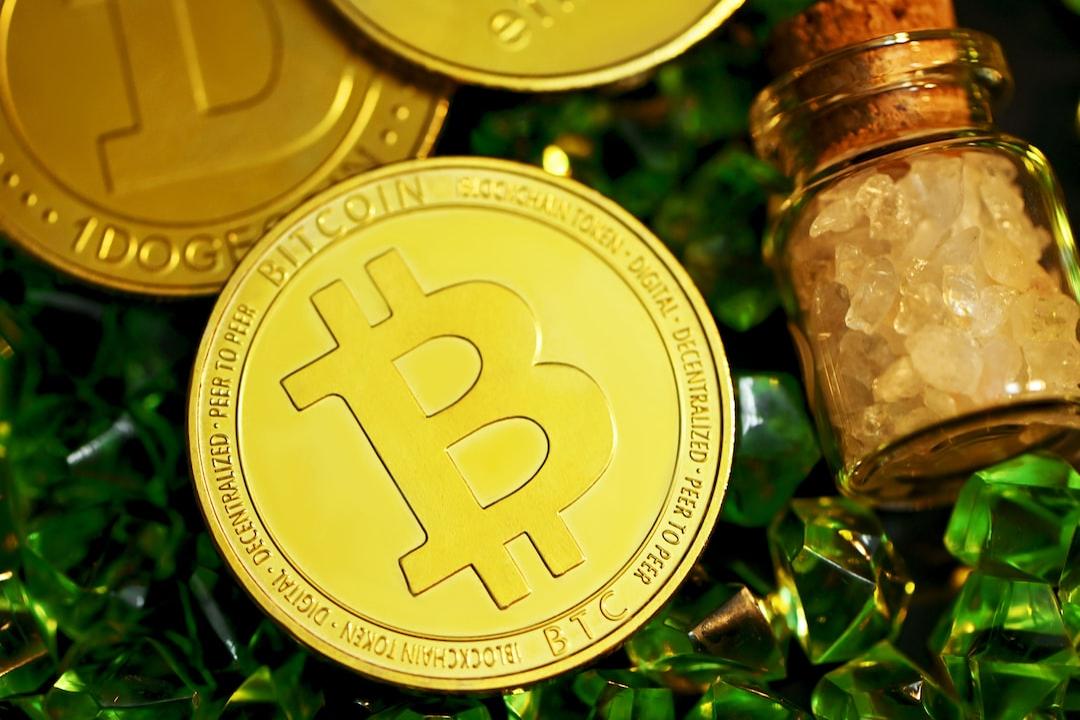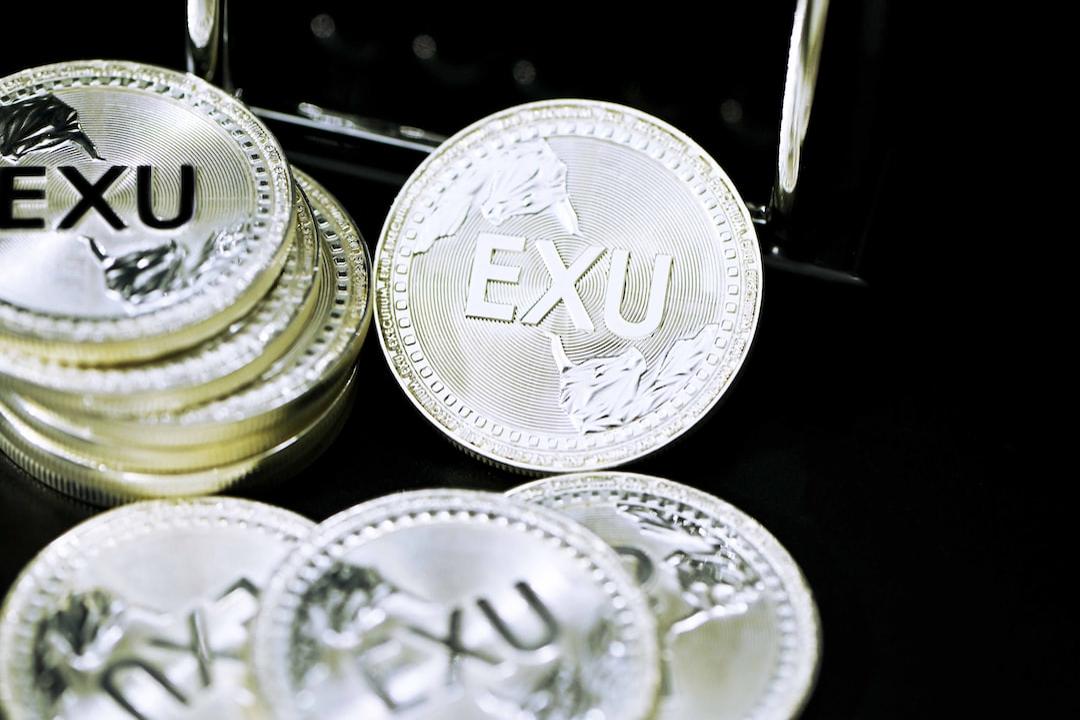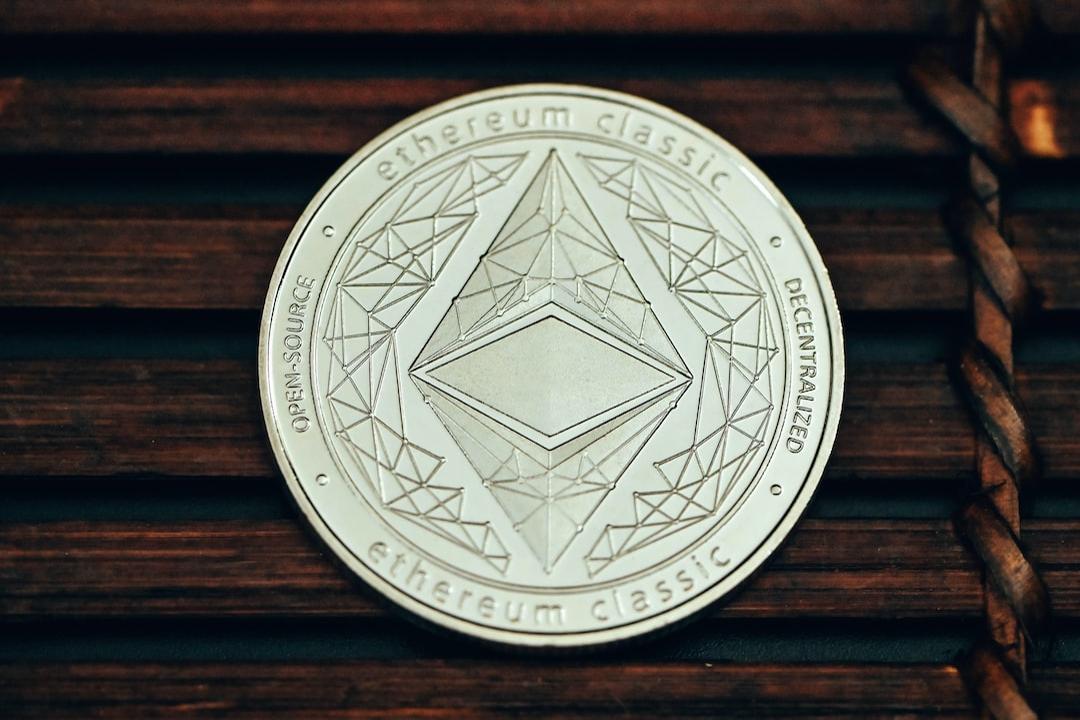Visa and Mastercard Compete for Dominance in the Web3 Payment Market
This article is sourced from 100y, written and compiled by TechFlow.
Background: Citigroup forecasts that stablecoins will become a mainstream economic sector in five years, with a market cap reaching trillions of dollars.
Additional Background: Payment giant Stripe launches “Stablecoin Accounts” supporting USDC and USDB, available in over 100 countries. Can Taiwan use it?
Key Points
Visa and Mastercard are the two dominant operators of global payment networks, and it is no exaggeration to say they almost control the global payment market. It is estimated that by 2024, the total global payment transaction volume will reach $20 trillion. If card payments can be processed through blockchain networks in the future, it will bring huge development opportunities to the blockchain and stablecoin industries.
Despite the significant improvements in the front-end experience of payment systems due to innovations from various fintech companies, the actual back-end systems processing transactions still rely on outdated technologies. Issues remain in settlement and cross-border payments, and blockchain offers a promising solution to these problems.
In April this year, Visa and Mastercard separately announced their roadmaps for blockchain and stablecoin applications. Both companies have launched related plans in the following areas: 1) Card services linked to stablecoins; 2) Stablecoin-based settlement systems; 3) Peer-to-peer international remittances; 4) Institutional tokenization platforms. It remains to be seen who will dominate the Web3 payment market.
1. Background — Can Blockchain Be Used for Payments?
1.1 The Two Giants of Traditional Payments

Source: Statista and Nilson
Visa and Mastercard are the leading payment network companies globally. By 2024, Visa is expected to hold a 39% market share of the global payment market, while Mastercard will hold 24%. Given that China UnionPay mainly handles transactions based on the Chinese domestic market, it can be said that Visa and Mastercard almost dominate the global payment landscape.
Both companies earn enormous profits by providing card payment networks, which handle transactions between consumers and merchants and settle between issuing institutions and acquiring institutions while charging a small fee. (We will discuss the payment process in detail below.) In fact, Visa and Mastercard achieved operating profit margins of 67% and 57%, respectively, in 2023. This reflects the low fixed-cost network business model based on high transaction volumes.
According to Upgraded Points, the volume of card network payment transactions in the United States is expected to reach approximately $10.5 trillion by 2024. With China UnionPay’s domestic transaction volume included, the global transaction volume is expected to reach $20 trillion. If card payment processing is conducted via blockchain networks in the future, it will bring huge opportunities to the blockchain and stablecoin industries.
1.2 The Card Payment Process
Visa and Mastercard both operate open card payment networks using the “four-party model,” which includes the issuing institution, the acquiring institution, merchants, and cardholders. Visa and Mastercard do not directly issue cards or provide loans but only provide payment networks. The basic process of the widely used four-party model in the U.S. is as follows:

Payment Request (D+0: The day of the transaction): When a cardholder makes a purchase at a merchant, a payment request is initiated through the card. Payment information is passed from the merchant to the acquiring institution, then to the card network, and finally to the issuing institution.
Payment Authorization on the Same Day (D+0: The day of the transaction): The issuing institution checks the cardholder’s credit limit, card validity, and whether there are signs of fraud before deciding whether to approve the payment. The approval information is returned to the merchant in the reverse order, completing the transaction.
Settlement (D+3: Three business days after the transaction): The issuing institution pays the acquiring institution after deducting settlement fees, while the acquiring institution pays the merchant after deducting merchant fees. The card network charges network fees to the issuing and acquiring institutions for each transaction.
Billing and Repayment (D+30: Thirty business days after the transaction): The cardholder receives a bill from the issuing institution in the next month and repays the owed amount.
1.3 Can Blockchain Be Used for Payments?
Over the past few decades, various fintech services related to payments have emerged, from the early days of PayPal to later services like Stripe, Square, Apple Pay, and Google Pay. These services have brought innovation to the front-end, making it easier and faster for users to make payments than ever before. However, the back-end processes that actually execute the payments have changed little. As a result, existing payment systems still have several issues.
The first issue is settlement time. In traditional payment processes, most merchants and acquiring institutions process transactions in daily batches, which usually occur once a day. Furthermore, settlements are typically processed only on business days, so if holidays or weekends are involved, the overall settlement time can be extended.
The second issue is the high cost of international transactions. When the issuing institution and merchant are in different countries, cross-border fund transfers are required during the authorization and settlement processes. This adds around 1% in cross-border transaction fees and 1% in foreign exchange fees, making international payments more expensive than domestic ones.
Blockchain offers a system that can solve both of these issues. As a decentralized network, blockchain can operate 24/7 without borders, enabling fast settlement and lower fees even for international transactions. Due to these advantages, Visa and Mastercard have been actively adopting stablecoins and blockchain technology in their payment networks in recent years. So, how exactly are they utilizing blockchain?
2. Key Point: The Payment War Has Begun
Visa’s Four Strategies

Source: Visa
Visa operates one of the largest payment networks in the world, VisaNet, which can process up to 65,000 transactions per second and supports payments at 150 million merchants in over 200 countries. Visa views stablecoins as a core component of future digital payment systems and announced four specific strategic initiatives in April to integrate stablecoins into its existing payment network.

1. Modernization of Settlement Infrastructure
Since 2021, Visa has been piloting payment settlements using USDC (a US dollar-backed stablecoin) through its existing VisaNet network. To date, more than $225 million in settlements have been completed. Traditionally, issuing institutions had to remit funds in US dollars to Visa for settlement. Now, they can also settle directly using USDC. This not only improves settlement efficiency but also reduces cross-border transaction fees.
For example, Crypto.com offers a Crypto.com Visa card that allows users to make payments using their cryptocurrency accounts. Previously, cryptocurrency-based companies had to convert digital assets into fiat currencies like USD to complete payment processing, which was time-consuming and expensive. Now, they can settle directly with USDC. In collaboration with Anchorage, Visa has set up custody accounts to securely store stablecoins. Issuing institutions like Crypto.com can transfer stablecoins to these accounts via the Ethereum network for settlement.
By eliminating the need to convert cryptocurrencies to fiat currencies and perform cross-border transfers, Crypto.com has reduced average prepayment time from 8 days to 4 days and lowered foreign exchange costs to 20 to 30 basis points.
Visa not only allows issuing institutions to settle using USDC, but it also launched a feature enabling acquiring institutions to settle directly with USDC. In September 2023, Visa established settlement infrastructure for acquiring institutions like Worldpay and Nuvei, allowing them to receive USDC through the Ethereum and Solana networks. Acquiring institutions can pass USDC to merchants or convert it to fiat currencies as needed.
In summary, Visa has successfully built a pipeline that allows issuing institutions to settle with acquiring institutions using USDC instead of USD through the Visa network. In the future, Visa plans to expand this stablecoin settlement system to more partners and regions, implement 24/7 real-time settlements, and support multiple blockchains and stablecoins.
2. Strengthening Global Remittance Infrastructure
Visa already supports large-scale cross-border transactions through its VisaNet infrastructure. One of its services, Visa Direct, facilitates peer-to-peer fund transfers through cards, wallets, and account numbers, covering payment scenarios between friends and businesses and customers. Visa plans to further enhance global remittance efficiency by integrating stablecoins into Visa Direct. Additionally, Visa recently invested in BVNK, a startup developing stablecoin infrastructure for enterprises, aiming to expand its stablecoin capabilities beyond the retail sector into the business ecosystem.
3. Launching Programmable Digital Currencies
One of the main advantages of stablecoins over traditional cash is their ability to utilize
Smart Contracts on the Blockchain
Visa is highly focused on the potential of automated financial services based on smart contracts and announced the launch of the “Visa Tokenized Asset Platform (VTAP)” in October 2024.
VTAP is a blockchain-based financial infrastructure that allows banks and financial institutions to issue and manage fiat-backed digital tokens (such as stablecoins and tokenized deposits). Since these features are offered through Visa’s API, integration with existing financial systems becomes extremely easy. Tokens issued through VTAP can be used in conjunction with smart contracts, enabling the automation of complex processes, such as conditional payments or customer loans.
Currently, VTAP is not publicly released and is still operating in a sandbox environment. Initially, it tested token issuance, transfer, and redemption features in collaboration with Spain’s BBVA bank. According to the roadmap, Visa plans to start a pilot project for real customers on the Ethereum public blockchain in 2025.
4. Developing Stablecoin On-Ramp and Off-Ramp Cards
Visa is helping issuing institutions provide on-ramp and off-ramp services through stablecoin-associated cards. To date, Visa has processed over $100 billion in cryptocurrency purchases and $25 billion in cryptocurrency spending via its cards. To expand this ecosystem, Visa is collaborating with stablecoin card infrastructure companies such as Bridge, Baanx, and Rain.
Bridge is a stablecoin infrastructure platform acquired by Stripe. Recently, Bridge partnered with Visa to launch a card issuance solution that enables users to make real-world payments using stablecoins. Financial tech companies can offer users stablecoin-linked card services through Bridge’s simple API. Cardholders can directly pay with their stablecoin balances, while Bridge converts the stablecoin into cash and pays the merchant. The service has already launched in Argentina, Colombia, Ecuador, Mexico, Peru, and Chile, with plans to gradually expand to Europe, Africa, and Asia.
Baanx, a fintech company based in London, was founded in 2018 and focuses on connecting traditional finance with digital assets. In April 2025, Baanx announced a partnership with Visa to launch a stablecoin payment card that allows users to make payments directly with USDC from their self-custodial crypto wallets. During the payment process, USDC is instantly sent to Baanx via smart contracts, and Baanx then converts it into fiat currency to complete the merchant settlement.
Rain, a fintech company founded in 2021 in New York, operates a global card issuance platform based on stablecoins. Rain offers APIs that facilitate businesses in issuing Visa cards linked to stablecoins and provides various financial services such as 24/7 real-time payment settlement, tokenization of credit card receivables, and the automation of settlement processes via smart contracts.
Mastercard’s Full-Chain Stablecoin Payment Solution

Source: Mastercard
Mastercard, like Visa, is one of the leading companies in the global payment network field. Unlike Visa, which uses its high-processing centralized network, VisaNet, Mastercard processes payments through Banknet, a powerful decentralized structure supported by over 1,000 data centers worldwide. On April 28, 2025, Mastercard announced that it had built an end-to-end infrastructure covering the entire stablecoin payment ecosystem, from wallets to checkout functionalities.
1. Card Issuance and Payment Support
Mastercard has partnered with several crypto wallets (such as MetaMask), crypto exchanges (such as Kraken, Gemini, Bybit, Crypto.com, Binance, and OKX), and fintech startups (such as Monavate and Bleap) to offer stablecoin payment services.
MetaMask, in collaboration with Mastercard and Baanx, has launched the MetaMask card, allowing users to make payments with crypto assets stored in MetaMask. Payment settlements are processed in the background via Monavate’s solution, which connects the Ethereum network to Mastercard’s Banknet and converts cryptocurrencies into fiat currency. The MetaMask card will first be available in Argentina, Brazil, Colombia, Mexico, Switzerland, the UK, and the US.
Mastercard also collaborates with the aforementioned crypto exchanges to support users who wish to make payments using stablecoins in their accounts.
2. USDC Settlement Support for Merchants
Although stablecoin payments are increasingly popular, most merchants still prefer to settle in fiat currency. However, if merchants require it, Mastercard also supports settlement in USDC through collaborations with Nuvei and Circle. In addition to USDC, Mastercard also supports the settlement of stablecoins issued by Paxos through a partnership with Paxos.
3. On-Chain Remittance Support: Mastercard Crypto Credential Service
Sending stablecoins through blockchain offers advantages such as simplicity, speed, and low cost. However, user experience, security, and compliance remain major challenges when applying them to real-life use. To address this, Mastercard introduced the “Mastercard Crypto Credential” service, allowing users of crypto exchanges to create aliases through a verification process and conveniently send stablecoins via these aliases. Visa and Mastercard are actively expanding the application scenarios for stablecoin payments, from card issuance and on-chain settlement to merchant support, by collaborating deeply with fintech companies, crypto wallets, and exchanges. This marks a significant step forward for stablecoin payments globally and also lays the foundation for the future development of the crypto industry.
Mastercard’s Crypto Credential service simplifies the user experience on the blockchain with its alias system, eliminating the need to input complex crypto wallet addresses, significantly improving user-friendliness. Furthermore, if the recipient’s wallet does not support a specific cryptocurrency or blockchain before the transfer, the transaction is blocked in advance to prevent asset loss. On the compliance front, Mastercard automatically exchanges the Travel Rule data required for international remittances, meeting regulatory requirements and ensuring transaction transparency. The exchanges supporting this service include Wirex, Bit2Me, and Mercado Bitcoin. The service has already launched in Latin American countries such as Argentina, Brazil, Chile, Mexico, and Peru, as well as in European countries such as Spain, Switzerland, and France.
4. Corporate Tokenization Platform
Mastercard’s Multi-Token Network (MTN) is a private blockchain-based service designed to help financial institutions and businesses issue, redeem, and manage tokens, enabling instant cross-border transactions. Some use cases of MTN include:
Ondo Finance tokenized its short-term bond fund (OUSG) based on US Treasury bonds and integrated it into MTN. This allows businesses to buy and redeem OUSG instantly around the clock without relying on traditional financial infrastructure, while also gaining stable returns.
JPMorgan integrated its blockchain payment system Kinexys with MTN to support businesses’ instant payment needs.
In May 2024, Standard Chartered conducted a pilot project through MTN, successfully tokenizing and trading carbon credits as part of a proof of concept.
Competing for Dominance in the Web3 Payments Market
As the US government increasingly supports cryptocurrencies, industries are accelerating their adoption of blockchain and stablecoins. As a core function of blockchain networks, financial infrastructure has naturally attracted the attention of payment network giants such as Visa and Mastercard. Both companies are actively developing the next generation of payment infrastructures.
Notably, both Visa and Mastercard released their plans for blockchain and stablecoin payment systems in April 2025 (Visa released its stablecoin role plan on April 30, 2025, while Mastercard revealed its full-chain stablecoin transaction capabilities on April 28, 2025). Both companies emphasized the following four areas: 1) Stablecoin-linked card services; 2) Corporate tokenization platforms; 3) Stablecoin settlement systems; 4) Peer-to-peer (P2P) remittance.
This indicates that Visa and Mastercard are competing to dominate the Web3 payments market.
Will the adoption of blockchain payment systems cause significant disruption to the existing market share and competition dynamics? The author believes that the next generation of systems will significantly alter the payment infrastructure itself, but it will not drastically change market share or competition structure. Blockchain payment systems will improve settlement efficiency and international transactions, helping businesses optimize revenue models and enhance competitiveness. However, the market share of the payment industry will ultimately depend on the business and marketing relationships between merchants, acquirers, and issuers. These relationships have been deeply rooted over decades, so blockchain applications may not significantly alter the competitive landscape.


